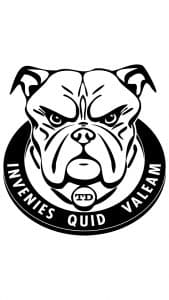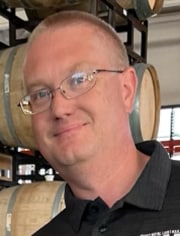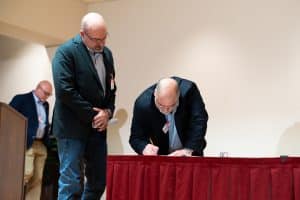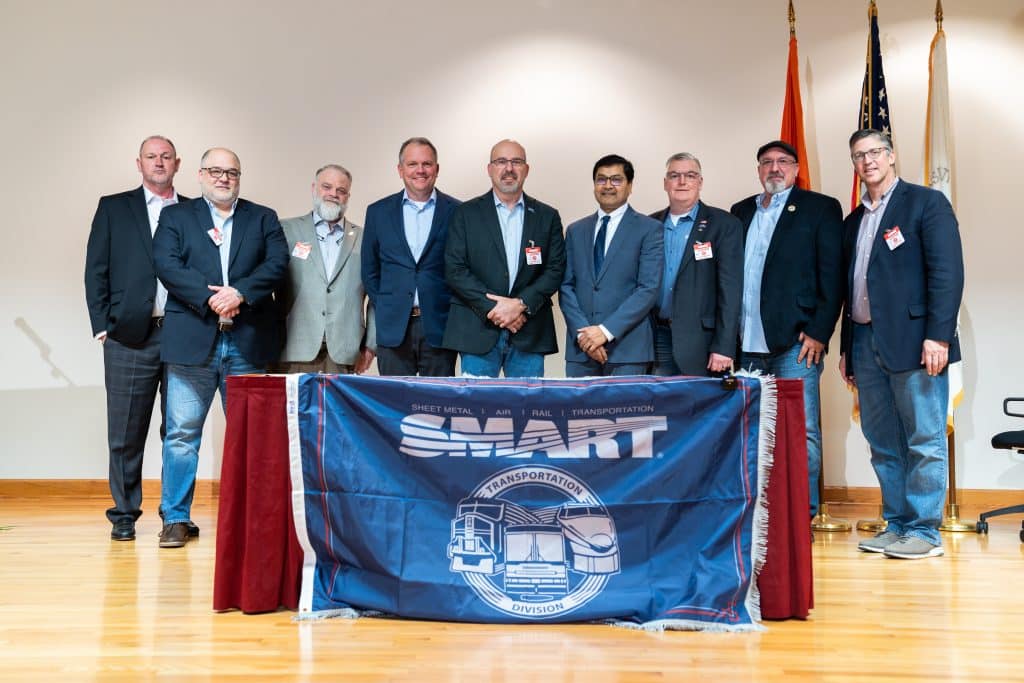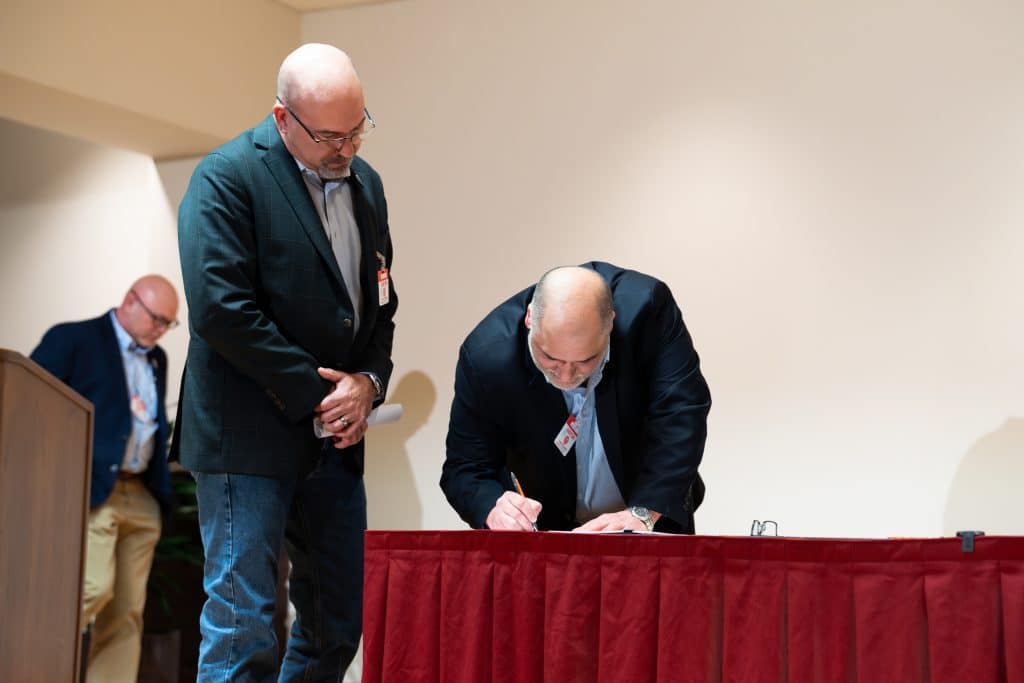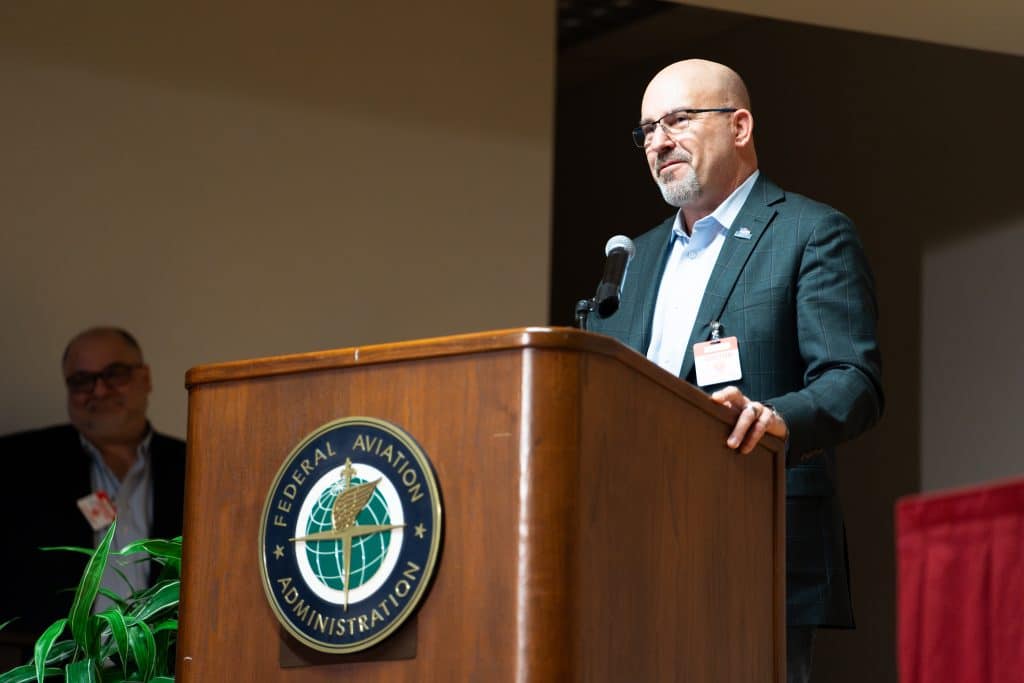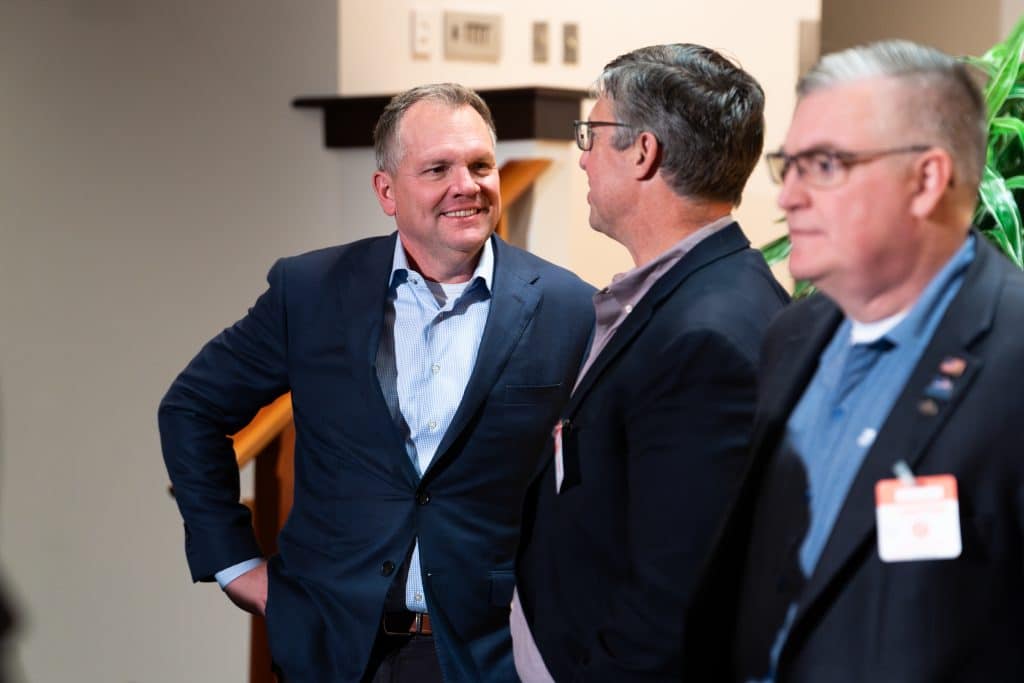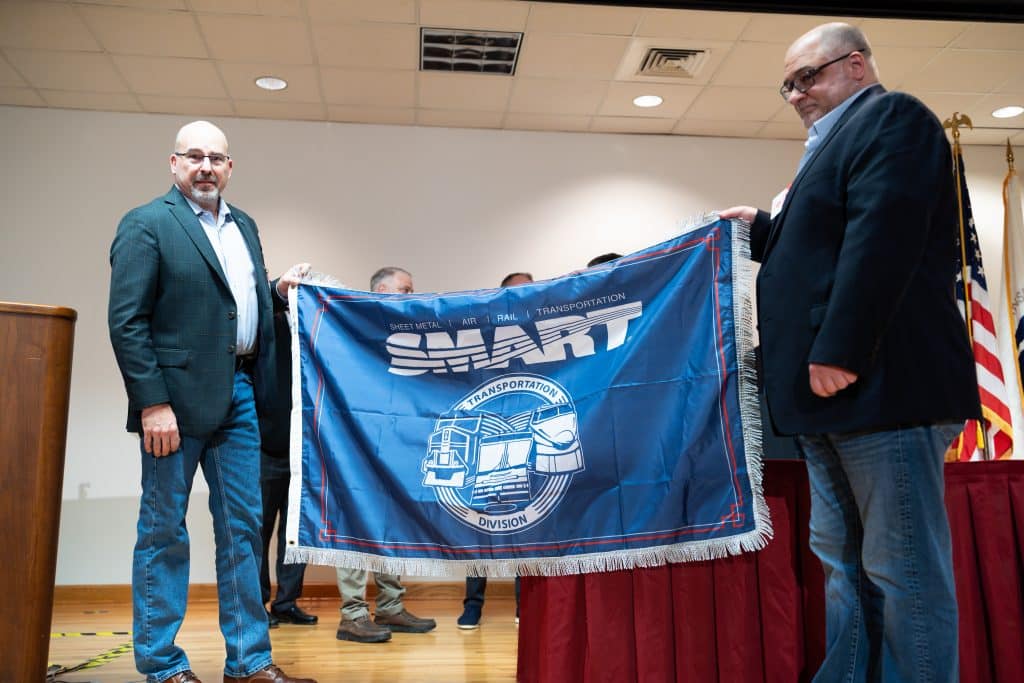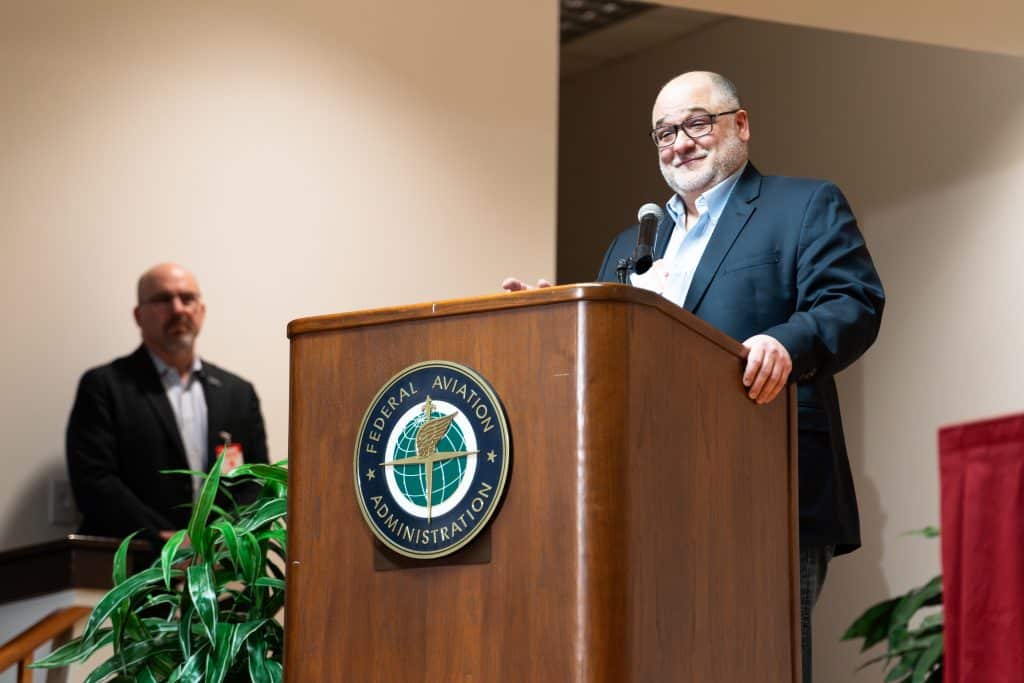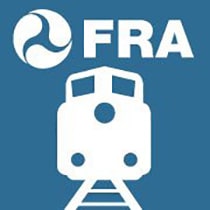For decades, Warren Buffett has reigned as one of the most-recognizable brands in American business. He leads BNSF’s parent company, Berkshire Hathaway Inc., and his decisions play a large role in the direction of the rail industry.
Buffett and Berkshire’s reach extends into industries all over the globe. It influences many common U.S. business sectors, from insurance, real estate, and the energy sector down to jewelry stores and the groceries we buy labeled Kraft or Heinz.
It is easy to understand why the alleged “Oracle of Omaha” and his annual letter to investors is widely read. His words are embraced by the owning class, who dream of hoarding even a fraction of Buffett’s great fortune. This year, Buffett complained in great detail about BNSF as well as railroading in general.
First and foremost, Buffett expressed his disappointment that BNSF’s revenue and profits fell last year. He also noted that our new contract provided raises that were “far beyond the country’s inflation goals.”
Nobody in the SMART Transportation Division is regularly found in Forbes or Fortune magazine. Still, our interpretation of his letter is that, in his billionaire opinion, the raises our members earned in the 2022 National Agreement were “too much” and that what it did to Berkshire Hathaway’s stockholders was “disappointing” because they — the ownership — deserved more.
Let’s be crystal clear, his statement never stated that BNSF lost money. His disappointment is that an overdue raise for the people who actually do the work cut into the obscene amount of profit they wanted to make. The 92-year-old billionaire, sadly, did not make as much off workers’ backs as predicted.
SMART-TD will not apologize to Buffett or anyone else on Wall Street for our men and women getting paid what they have rightfully earned while keeping this nation’s economy humming.
He went on to describe how BNSF’s profit margins have fallen relative to the other Class I railroads and promised that these “margin comparisons can and should improve.”
Maybe that’s why he decided to have BNSF cut the jobs of maintenance workers, pipe fitters and other unionized workers across the railroad. These men and women many with mouths to feed, were shown the door the VERY WEEK after his public-facing letter.
Our union hears this loud and clear. If the profits being returned to the stockholders are disappointing, the answer for Berkshire Hathaway and BNSF obviously isn’t for the company to try harder to grow, to earn new business, or expand its relationship with the customers they have; it is to increase the operating (Profit) ratios. The easiest and most-expedient way to do that is to start handing out pink slips and furloughs because the executives and shareholders MUST get theirs first and foremost.
We know what it looks like when railroad-owning hedge funds start managing railroads based on operating ratios and profit margins. Safety goes out the window, trains get longer, brake inspections get rushed, extra boards get smaller, PO days get canceled, maintenance workers are axed. Life gets harder at home and more hazardous for those on the job.
If Berkshire Hathaway’s profit isn’t growing fast enough, the executive perspective is it’s far cheaper to buy additional whips than to add more horses to the team. This is the same mentality used by Wall Street to run our industry into the ground since 2017.
Buffett went on to discuss the work conditions that our members/his employees face. He discussed how he works in an “always-comfortable office” while railroaders are doing their work in harsh winter conditions that are both “tiring and dangerous.” If these are actual concerns he holds, SMART-TD and our General Chairpersons would be happy to discuss more structured rest schedules, the end to BNSF’s ridiculous “Hi-Viz” attendance policy, as well as the implementation of the many safety protocols and redundancies our union has long advocated.
Additionally, if Buffett and Berkshire Hathaway’s upper management are truthfully concerned with the level of danger for their employees, they could follow Norfolk Southern’s lead and join the Confidential Close Call Reporting (C3RS) program as the FRA, NASA, and the Department of Transportation have been suggesting. This way, they can enable the safety benefits for their employees that other railroads have realized by participating in this program. It’d be preferable to going down the dangerous path of crew-size reductions and automation.
Along those same lines, another change Buffett and BNSF CEO Katie Farmer could make for safety is not to follow through on the planned job cuts for workers in the nation’s heartland.
Cutting 362 jobs in crafts charged with inspections, safety compliance, and making pivotal repairs to the tracks and rolling stock does not square with any concern expressed for worker safety. It does line up roughly 100% with the OTHER comments made about easing the “disappointment” of Berkshire’s stockholders. Buffett’s letter also laments that “a growing percentage of Americans are not looking for the difficult, and often lonely employment conditions inherent in some rail operations.”
Until Buffett and the machine at Berkshire Hathaway Inc., as well as the rest of the rail executives and their all-important stockholders, are ready to address workers’ issues in a serious, thoughtful way, the hard-working people represented by SMART-TD would appreciate it if they didn’t use the crosses we bear to shield themselves in their “always-comfortable offices.”
It is inappropriate to hide behind the dangers and hardships we endure on your behalf; hardships we tolerate for the good of our families, to gain wiggle room with stockholders who aren’t happy with the size of your dividend check. As a reminder, you and your fellow shareholders make money because of us, not in spite of us, even though the Association of American Railroads claimed otherwise in 2022 that “Labor Does Not Contribute to Profits.”
We are exploited enough in our day-to-day duties at BNSF and the other big railroads with inflexible attendance policies and a desire to place profitability over safety and humanity. You have no right to use our hardships to justify anything to the stockholders. You have no right to twist the worst aspects of our lives into a justification for a recommitment to longer trains, more grueling schedules, and a diminished commitment to appropriate staffing and safety. We resent the manipulation of your backhanded compliments on our toughness and ability to overcome our job conditions despite your lack of actual assistance.
Mr. Buffett, you have done nothing in this letter but show that the owning class believes in its own story that what they do in the comfort of their own office matters more than what happens where the boots hit the ballast, at all hours of the day and night and types of weather.
How can you justify telling the world that an overdue pay raise is problematic for stock dividends while you also use our lifestyle to hijack any empathy the public has for us to benefit you and your multi-billion-dollar conglomerate?
Railroaders are used to having their primary meal for the day come off the roller grill at a gas station, but even we can’t swallow this much hot garbage.
SMART-TD is not a publicly traded, market-driven organization. We don’t pretend to understand the motivations that led to this addition to your “Letter to Investors,” although we can speculate. We do, however, know railroading. One phrase you hear when conflicts arise in crew rooms that might be good advice — “Keep my name out of your mouth.”
Until Berkshire Hathaway, BNSF, and Buffett are willing to address the core quality-of-life issues on their railroad and put the people who do the work first, rather than using them as corporate propaganda, it would be wise to adhere to this invaluable wisdom.
